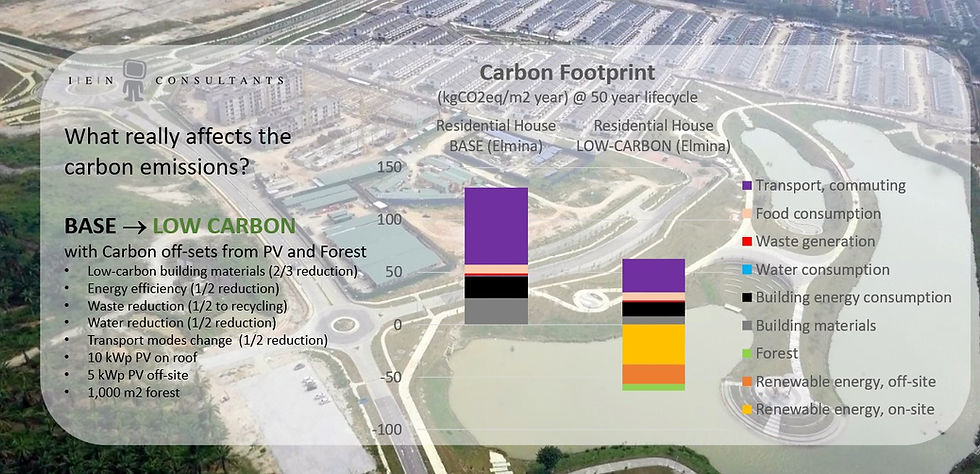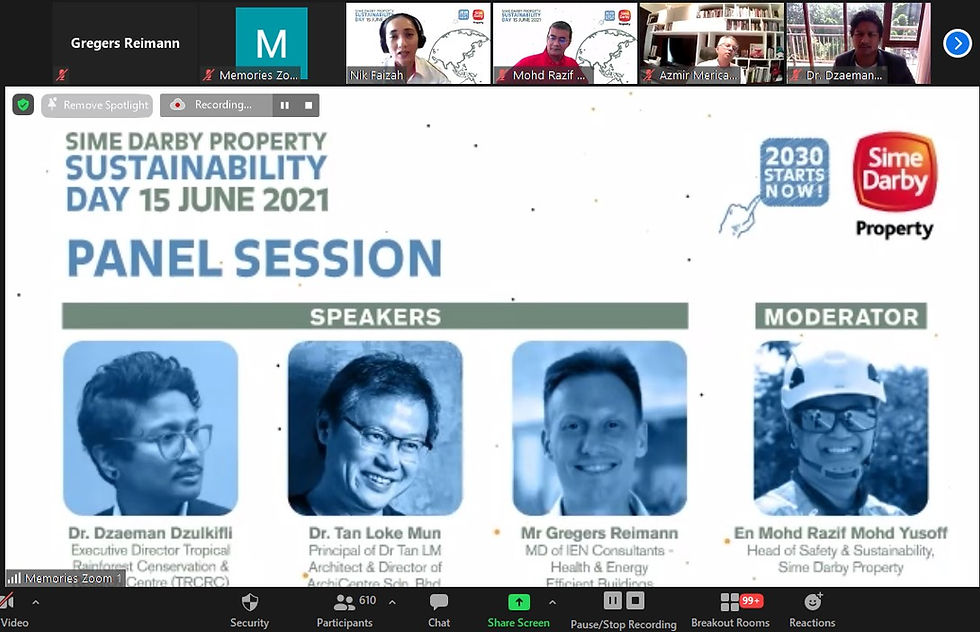Carbon-breakdown of House @ Sime Darby Sustainability Day
- Gregers Reimann

- Jun 15, 2021
- 2 min read
Glad to see Sime Darby's continued focus on going green as evident during today's Sime Darby Sustainability Day for which IEN was delighted to be invited back as one of the speakers. Attended by more that 600 of their staff, the Sime Darby management told that Sime Darby intends to achieve operational carbon-neutrality within a decade or so; the official announcement will be made at a later date. In this light, IEN chose to present the carbon emission breakdown for a typical house in a Sime Darby housing development. In other words, where the carbon is emitted? And what low-carbon measures really matter in order to get to zero-carbon?

Based on actual operational figures for typical Sime Darby houses with respect to energy, water and waste as well as drawing upon carbon databases locally and internationally, our carbon emission breakdown over a 50-year period shows that three biggest carbon emissions of housing developments come from
57% (commuting transport)
19% (building materials)
16% (building electricity consumption)
From a low-carbon perspective, it is therefore most important to address the significant carbon emissions from transportation. Implementing a network of conducive, safe and shaded pathways for bicycling and walking that connects nearby shops / workplaces / schools / amenities can greatly contribute to reducing carbon emissions for transportation. Moreover, with the advent of electric cars and electric bicycles/scooters, property developers can make transport zero-carbon with sufficient solar capacity installed for free-of-charge vehicle charging - a great incentive to make the residents switch to electric vehicles.
Energy efficient buildings that are designed to work with Nature - instead of against it - as well as the use of low-carbon materials will also help to reduce the carbon footprint of housing development.
Reducing carbon emissions from food might be possible from growing vegetables and fruits in community gardens within the housing development.
In short, there are lots of discussions and design optimisations to be had on the exciting and necessary journey to carbon-neutrality.
Thank you to Sime Darby and the other panelists, Dr. Dzaeman Dzulkifli and Dr. Tan Loke Mun, for an interesting morning session on prospects of a low-carbon future for Sime Darby:





Comments